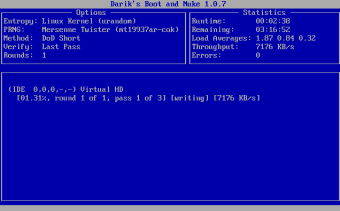
Apply the following settings:(a) Select the radio button for Physical Hard Drive and choose the offline USB drive Then select the new VM and click Settings.
Click Finish to complete creating the VM. You probably don’t need much memory I used 1GB with Dynamic Memory disabled. Select “Generation 1” and then click Next. Give your VM a name and choose its location, then click next. Under Actions in the Hyper-V Manager, select New -> Virtual Machine. I’d imagine this will work with other virtualization tools as well, so long as they let you access a physical drive. Ensure Hyper-V is working on your host computer. Find the USB drive you want to clear and, on the left, right-click and select “offline” to take the drive offline. In Windows 10, open the Start menu and type diskmgr to open the Disk Management tool. I have an earlier generation of this adapter, which accepts any 2.5″ or 3.5″ SATA drive, and it works well in this situation. Find the drive you want to erase, and connect it via a USB adapter. Save the ISO file wherever you like to create virtual machines. Download the dban ISO file from its home on SourceForge. Virtualization provides a safe sandbox to run dban, and I can run it in the background on my existing PC. So I had the idea of using Hyper-V, my favorite virtualization tool that’s built into Windows 10 (Enterprise, Professional, or Education editions). 

But they recommend running it on a dedicated machine because by default it wipes out all connected hard drives and it’s easy to accidentally wipe out everything. That leaves the software approach, and a bunch of people recommended dban. The brute force solution might be good if I had a lot of pent up aggression, but it physically destroys the drive.

The hardware solution would be perfect if I did this every week, but it’s kind of expensive and this isn’t something I’ll use very often. This article from ZDNet offers three options: one software ( Darik’s Boot and Nuke – dban), one hardware ( Wiebetech’s Drive eRazer Ultra), and one brute force (drive a nail through the platters). But how to do so securely, so data can’t be recovered? And how can I hit a budget goal of, say, zero? I’m using this time to do a deep clean on my home office, and I’ve come across a number of hard drives that need disposal. I’m writing this between jobs – I’ve left BlueMetal, and haven’t started at Microsoft yet.







 0 kommentar(er)
0 kommentar(er)
